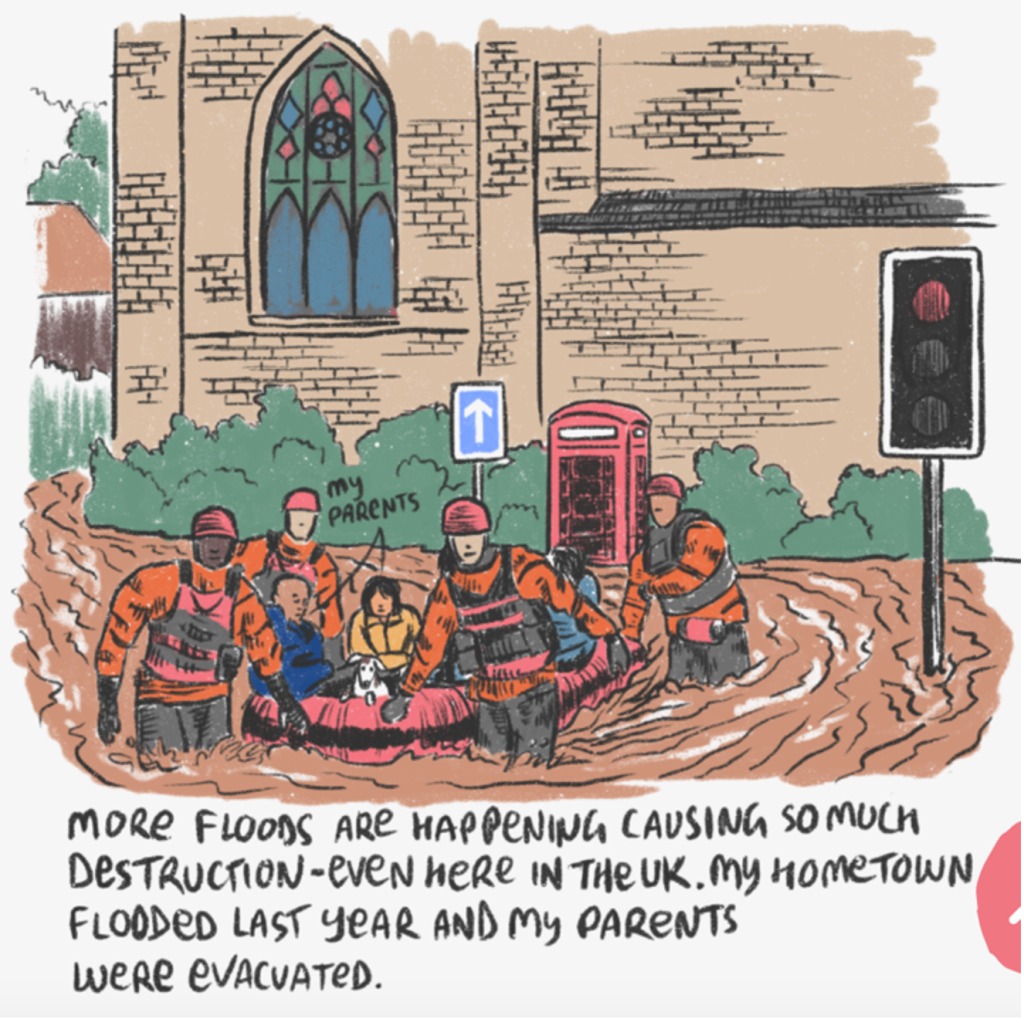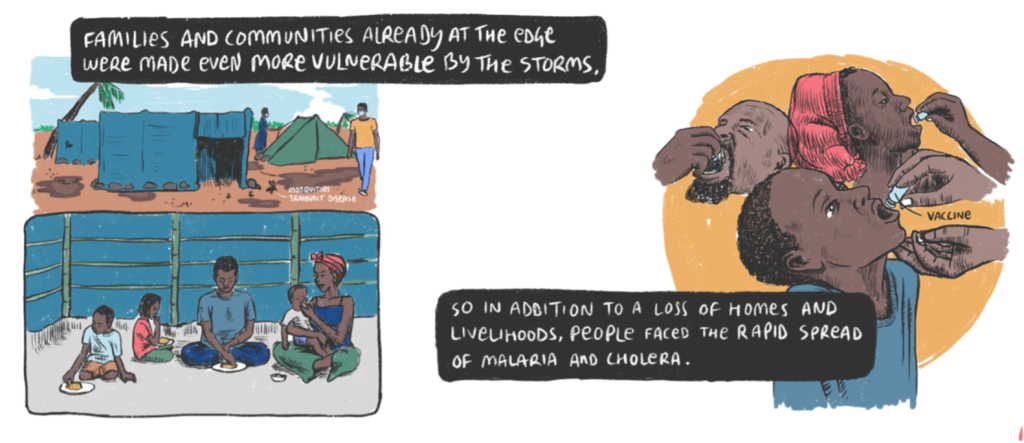Extension Activities Units 9 & 10
UNITS 9 & 10 – City Life
- SDG 8 – Decent Work and Economic Growth
- SDG 11 – Sustainable Cities and Communities
After every two Units you are offered a choice of extension tasks. Depending on what area you most want to develop, choose and complete a relevant task. You are welcome to complete as many as you like.
These are not tests, and no marks are awarded. They are opportunities to develop your language further, based on a self-assessment of your needs.
NOTE: It may be that in your local context you are not able to access the videos on YouTube. They’re included here alongside other free-to-access resources, so hopefully you will still have plenty of choice.
Develop your knowledge of the SDGs
1. Test your knowledge of SDG8 and SDG11 with Go Goals digital board game.
Go Goals is a ready-to-use board game developed by the United Nations that helps understand the Sustainable Development Goals, and how each of us can contribute to realising the goals. Access this link to the game and click on the white circle next to Goal 8 and Goal 11 and answer the set of quiz questions that appear. Check your answers when you are done.
2. Input any text into the OSDG Wheel and you will be able to see any key SDGs in the text along with their estimated relevance scores (%), followed by any additional SDGs found in the text. Try inputting one of the texts you’ve been reading in these 4 Units.
Develop your Speaking
Design and deliver a Pecha Kucha (Japanese for chit-chat). This presentation format is based on using 20 presentation slides but only talking about each of them for 20 seconds (each presentation should be 6 minutes and 40 seconds long).
- Only still images on the slides – no text or videos
- Each slide only stays on the screen for 20 seconds only
- What you say should be about the slide that is showing
Choose one of the topics below and find 20 relevant images:
- What you’ve learned in these two Units: Create a presentation with images of different topics or themes you have studied.
- One of the Goals: Create a presentation with images based on one of the SDGs.
- A story: Create a sequence of images of people places and things related to one or both of the SDGs.
- An initiative you would like to be involved with: Research an initiative happening somewhere in the world. Create a sequence of 20 images.
Configure your slide timings so that the slides automatically change after 20 seconds. This will oblige you to be very concise!
You can practice recording/timing your presentation here:
Develop your writing
In the infographic in Unit 10 you learned that highly damaging environmental disasters in the US are becoming more frequent and more severe, and therefore more costly.
Read the graphic story and think about the effects of the climate crisis in developed countries, such as the US and the UK, and how they are able to respond, and the effects of the climate crisis in places like Ethiopia, as in the images.
Write a paragraph about the human cost of the climate crisis in all parts of the world, and what you think we need to do about it.


Develop your reading – Reading for interest
Access the link and read one (or more) of the texts. Practice your skim reading first to get a general idea of what the text is about, and then read in more detail, focusing on the parts that interest you.
Articles from The Conversation:
- The International Labour Organisation.
- Cities don’t foster multiculturalism.
- The century of the sustainable city.
- Debt bondage, domestic servitude and indentured labour are still a problem in the world’s richest nations.
Develop your vocabulary
BBC Learning English – Air pollution shortens life.
Play an interactive web-based game
Mission is a single-player, 2D platformer designed to tell the stories of four men from the Ottawa Mission and create awareness about homelessness.
Develop your Listening
Access one (or more) of the links and listen to the text. Listen once for general idea and then listen again for detail, focusing on the parts that interest you.
Cities and housing
- The conversation, narrated text – Most buildings were designed for an earlier climate. Here’s what will happen as global warming accelerates.
- The Conversation podcast – how architects are hoping to keep buildings cool as it gets hotter by resurrecting traditional architectural techniques. A transcript of the podcast is available here.
- MIT undergraduate lecture – Public Housing in the US (34 mins)
Cities
- UNESCO Many Voices One World podcast. ‘Why Architects are Looking to the Past to Build the Sustainable Cities of Tomorrow’
- David Attenborough video and text ‘Cities that are saving the planet’.
Take action
- Access the link to the ‘Take Action Today’ site for Goal 8 and/or Goal 11 and select an action you can take in your everyday life to help meet the aims of these SDGs.
- Or choose an action from The Good Life Goals.
- Or choose an action from 170 Actions.
Sing
Choose one (or more) of the songs to listen to. When you have listened record your response to the song. This could be:
-
- a short, written response
- a drawing
- an infographic
- a video of yourself talking about it (made on your phone)
- any other mode that allows you to respond to the song
1. ‘Shift Work’ by Kenny Chesney and George Strait (2007)
The song is performed by Chesney and Strait and written by Troy Jones, who worked shift work in a paper mill for 20 years. This country song describes what it’s like working around-the-clock shifts: 11.00pm-7.00am, 7.00am-3.00pm, 3.00pm-11.00pm. It celebrates blue-collar work (manual work) as frustrating and physically exhausting, in which the only thing to be enjoyed is the money.
You can find the song here on YouTube.
2. ‘Cash in Your Face’, by Stevie Wonder (1980)
The song is about the housing discrimination black people can face, as some landlords refuse to rent to them despite anti-discrimination laws, finding a range of excuses to say no. People have the ‘cash’ (money) but they can’t ‘cash in’ their face (trade the money for the apartment because of the colour of their face/skin). The lyrics appear below the video if you’d like to read as you listen.
You can find the song here on YouTube.
3. ‘Allentown’, by Billy Joel
This song can be called an anthem for blue-collar workers in America. This rock song was released in 1982, and it describes the decline of the steel industry in the rust belt of America. The song is about the impact of laying off on the workers. People who belong to the age of Billy Joel’s parents enjoyed a thriving working-class life after World War II industrial manufacturing, and their children were taught to expect at least as good as their parents.
The cheap labour went overseas when the opportunity dried up, and the union provided no protection. Group of workers headed up to the unemployment line since they were unable to meet the ends. These workers were mainly disillusioned by the American dream.
To see the transcript click ‘watch on YouTube’. When you are in YouTube, click the 3 dots in the bottom right under the video and select ‘show transcript’.
4. ‘Where do the children play?’ By Cat Stevens
Go to the lyricstraining website to listen to the song and practice your listening skills by filling in some of the words as you listen. You may need to click the ‘go to web’ button at the top of the screen to get started. You don’t need to create an account – just click ‘maybe later’ when you see the prompt on the screen. Try the ‘intermediate’ level (where you have to fill in 25% of the words as you listen) and if you can do that quite easily switch to the ‘advanced’ level (50%). Use the arrow keys below the video to listen again or to skip and have the word revealed if you can’t catch it.
5. ‘Big Yellow Taxi’ by Joni Mitchell, 1970
‘Big Yellow Taxi’ was a hit in the UK at No.6 in the charts when it was released in 1970. The lyrics were inspired by a trip to Hawaii where Mitchell describes being heartbroken at the sight of parking lots as far as the eye could see. This song is timeless and despite its age it is still, unfortunately, very relevant today.
The line D.D.T is a reference to Dichlorodiphenyltrichloroethane, a pesticide that has detrimental impacts on wildlife, water and human health. In her book ‘Silent Spring’, published in 1962, Rachel Carson had strongly opposed the use of DDT and questioned the logic of broadcasting potentially dangerous chemicals into the environment with little prior investigation of their environment and health effects.
You can find the song here on YouTube.
Something else?
Is there something you’ve spent time studying that hasn’t been covered above? What is it? Explain in detail either in writing or as an audio file on your phone.
Use the menu bar on the left-hand side of the screen to access Unit 11.

